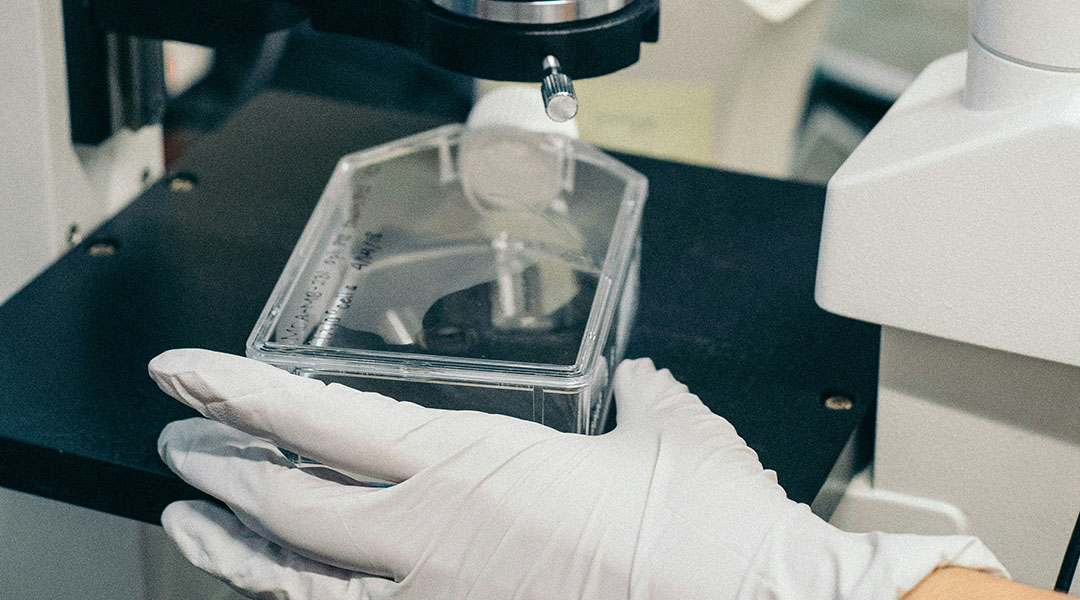Imagine a time where instead of using antibiotics, we could simply zap bacteria with a small amount of electrical current. This is not the reality now, but scientists are beginning to understand how electrical current at levels imperceptible to humans can reduce harmful bacterial growth on the skin.
This work, from a collaboration between two labs at University of California San Diego and University of Chicago, was recently published in Device.
The impetus of this work is the growing antimicrobial resistance crisis, which is predicted to be the leading cause of death by 2050. In 2019, bacterial skin infections accounted for 72% of all deaths due to skin and subcutaneous diseases.
“We wanted to know, can we control these skin bacteria without having to use antibiotics?” said Gürol Süel, a professor at UC San Diego.
Honing in on skin commensals
One of the culprits behind skin infections is the bacterium Staphylococcus epidermidis. This bacterium is commonly a part of our skin’s microbiome but it can cause opportunistic infections in cases where the skin is compromised and it overgrows to form a film of bacteria called a biofilm.
“We don’t want to kill them. We want to keep them, but we want to suppress the harmful side,” said Bozhi Tian, a professor at University of Chicago. Because this bacterium also has benefits for our skin, the idea was to suppress their growth and suppress their harmfulness.
The researchers found that mild electric current inhibited the growth of S. epidermidis in lab cultures, and with repeated rounds of electrical stimulation, they found that biofilm formation decreased by over 90% in these cultures.
However, this inhibitory effect could only be seen at the pH of healthy skin. This contrasts with the pH of skin with chronic wounds, dermatitis, and acne, are higher. Because this response to electrical current only occurs at a specific pH, the scientist called this “selective excitability.”
“When we think about cells that are excitable, we think about neurons. We think about [heart cells], and muscles,” said Süel. “We don’t typically think of bacteria, and we found that these bacteria are, in fact, excitable.” Aside from S. epidermidis, the researchers found two other skin bacteria – those that can cause urinary tract infections and those that colonize prosthetic devices – are selectively excitable.
“Unlike what we initially thought, most [microbes] may actually be electrically excitable,” said Tian. “The key is to identify the range that your electrical stimulation can excite them. After you discover this, it might have a lot of medical applications.”
Building the bioelectronic device
As the bacteria were only excitable at a specific pH, the researchers developed a bioelectronic device that can both restore the skin’s pH to a level where the bacteria becomes excitable and deliver electrical current. The scientists used a hydrogel – a jelly-like material that resembles normal tissue – to change the skin’s pH. “The hydrogel provides that proper pH because we can control the pH of the hydrogel,” said Süel.
The researchers tested the device using pig skin models finding that electrical current delivered for 10 seconds every 10 minutes for 18 hours significantly reduced biofilm formation. They saw similar effects when tested on catheter surfaces.
So what’s next? “We want to do in vivo experiments,” said Tian, who mentioned human trials would follow if successful. “There are still multiple steps before we can [use the device in the clinic].”
Applications beyond the skin?
While the researchers built the device for skin applications, it’s possible it can be applied to other sites of infection like the gut. “Because it’s an electronic device, you can customize every aspect of it to whatever sort of infection or whatever patient you’re dealing with,” said Süel. This contrasts with antibiotics, where doctors generally prescribe the same dose despite individual differences.
By identifying specific conditions where microbes are excitable and fine tuning the electrical device to also deliver that condition, Tian thinks the applications can be broadened to different species of bacteria, diseases, and even medical implants.
Tian is hopeful to see more collaborations between bioelectronic researchers with biologists and microbiologists. “After [people from] different fields start to talk, new opportunities, new discoveries just emerge naturally,” he said.
Reference: Saehyun Kim et al., Bioelectronic drug-free control of opportunistic pathogens through selective excitability, Device (2024). DOI: https://doi.org/10.1016/j.device.2024.100596
Feature image credit: Jaron Nix on Unsplash

















